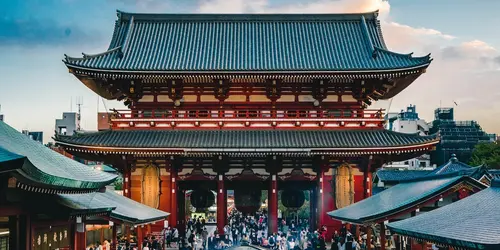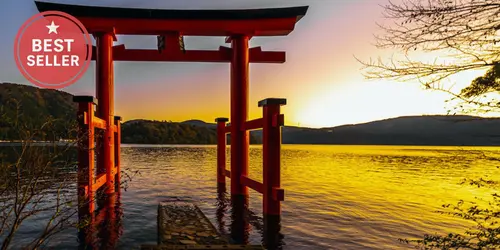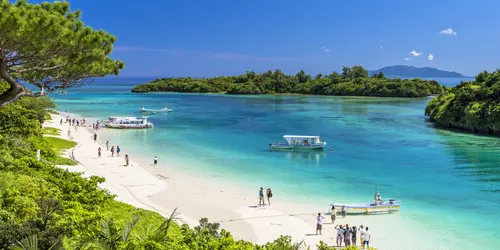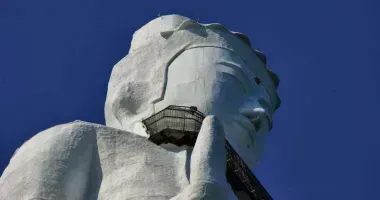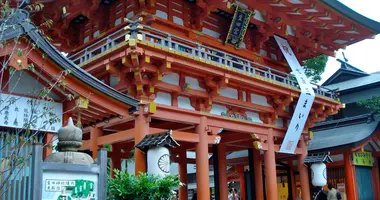Honpukuji Temple Water Temple: A modern architectural marvel on Awaji Island
- Published on : 22/05/2024
- by : Japan Experience
- Youtube
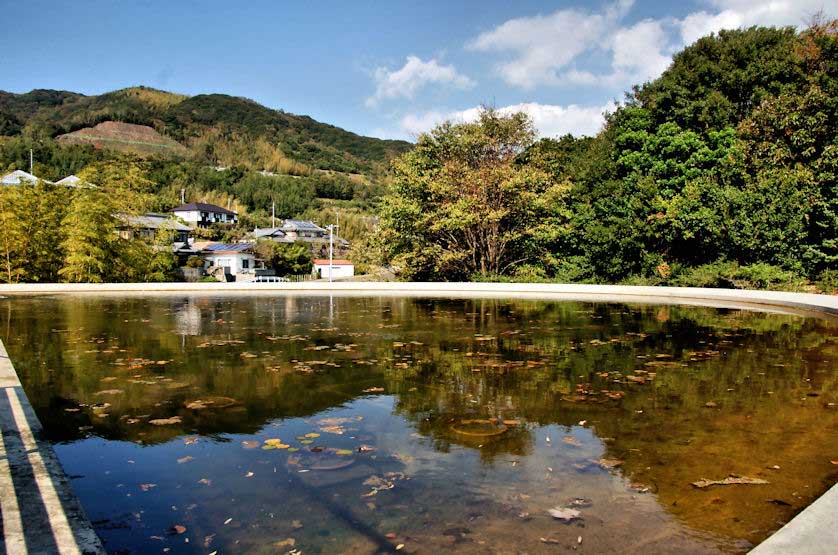
The "Water Temple", by Ando Tadao on Awaji Island
Nestled on the serene island of Awaji, the Honpukuji Temple, also known as the Water Temple, stands as a testament to modern Japanese architecture and spiritual innovation. Designed by the renowned architect Tadao Ando, this unique Buddhist sanctuary seamlessly blends contemporary design with traditional symbolism. The temple's most striking feature is its large oval pool of water that serves as both a reflective surface and an entrance to the sacred space below. As visitors approach, they are greeted by a sight that challenges conventional notions of temple architecture, inviting them on a journey of discovery and contemplation.
The unique design of Honpukuji Temple by Tadao Ando
Tadao Ando's vision for Honpukuji Temple revolutionized traditional temple design. Instead of the typical grand roof, Ando opted for a flat plane of water adorned with lotus flowers. This innovative approach was inspired by his travels through Asia, particularly a scene he witnessed in India of a temple reflected in a lotus pond. The temple's design process began in 1989, and Ando sought to create a structure that honored the spirit of tradition while embracing modern architectural concepts.
The temple's approach is carefully orchestrated to create a sequence of transitional experiences. Visitors first encounter a stone path leading through a wooded slope, then face a concrete wall rising from a white gravel forecourt. Beyond this, a gently curving wall guides them to the reveal of the oval water pool. This thoughtful progression helps visitors transition mentally and spiritually from the everyday world to the sacred space of the temple.
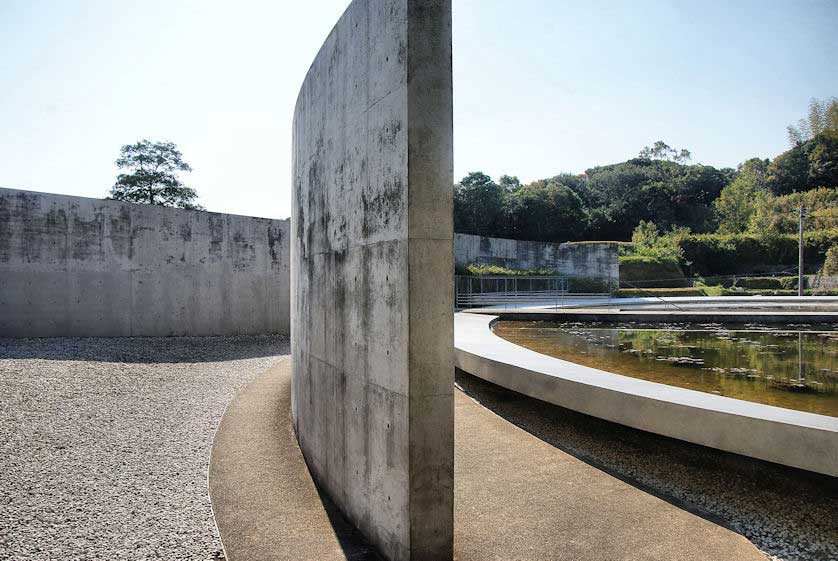
The approach to the Water Temple on Awaji Island
The journey through the Water Temple: A sensory experience
The journey into Honpukuji Temple is a multi-sensory experience designed to evoke a sense of spiritual transition. As visitors approach the temple, they are first greeted by the sight of the large oval pool that reflects the surrounding landscape. During summer months, lotus blossoms and water lilies float on the surface, adding to the serene beauty of the scene.
To enter the temple proper, one must descend a staircase that bisects the pool, symbolically passing through water to reach the sacred space below. This descent leads to a curved corridor that gradually fills with a reddish light, guiding visitors towards the main altar and sanctuary. The journey culminates in the circular main hall, where visitors are enveloped in an intense vermilion light that seems to pulsate from the core of the temple.
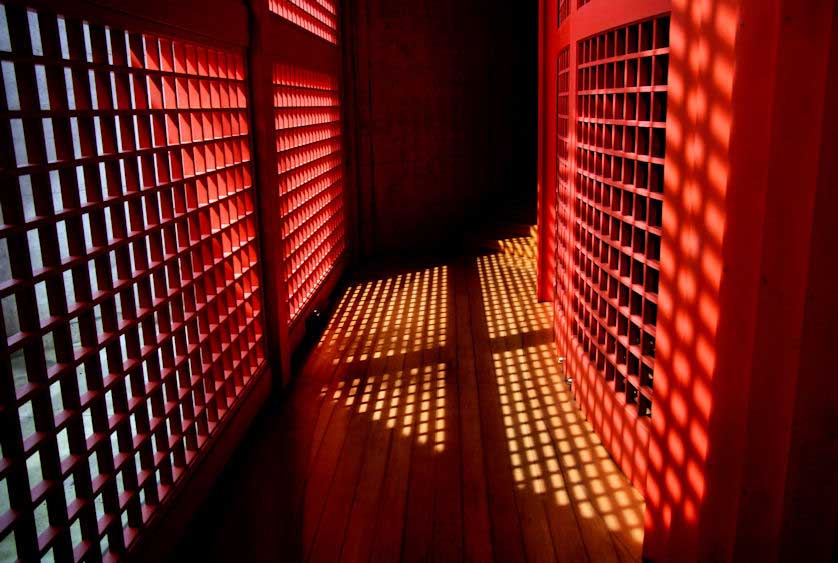
The west side of the interior of Honpukuji, where natural light enters the building
Symbolic elements and Buddhist significance in the temple's architecture
Every aspect of Honpukuji Temple's design is imbued with deep symbolic meaning rooted in Buddhism. The oval pool on the temple's roof represents the lotus flower, a sacred symbol in Buddhist tradition representing purity and enlightenment. The act of descending through water to enter the temple echoes the Buddhist concept of spiritual cleansing and rebirth.
Inside the temple, the circular design of the main hall represents the wholeness and completeness of the universe. The intense vermilion color that fills the space is traditionally associated with spirituality and purification in Japanese culture. The temple houses statues of Fudo Myo O and Kobo Daishi, the founder of Shingon Buddhism, further emphasizing its connection to this particular Buddhist sect.
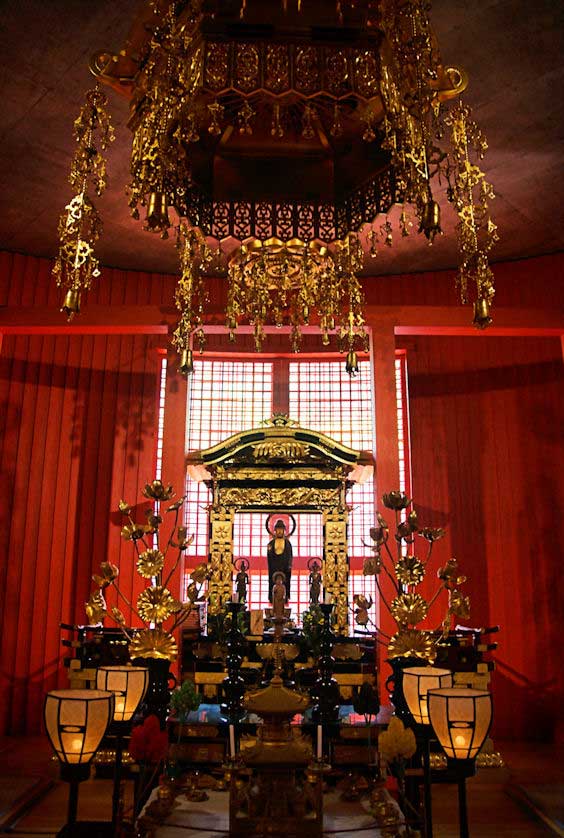
The main sanctuary and altar at Honpukuji, the "Water Temple"
Best times to visit and photographic opportunities
Honpukuji Temple offers unique visual experiences throughout the year, making it a photographer's dream. The best time to visit is during the summer months, from May to September, when the lotus flowers and water lilies are in full bloom on the temple's reflecting pool. The sacred lotuses are particularly beautiful from June to July.
For those seeking to capture the temple's interior in its most dramatic light, visiting in the late afternoon is recommended. The vermilion glow of the main hall is most intense during sunset, as warm light radiates through a west-facing window. This timing is not only aesthetically pleasing but also symbolically significant, as it represents the light coming from the direction of the Pure Land in Buddhist belief.
How to access Honpukuji Temple on Awaji Island
Reaching Honpukuji Temple requires some planning, but the journey is part of the experience. The temple is located in the Ura district of Awaji city. Here are some ways to get there:
- By car: The temple is a 5-minute drive from the Higashiura Interchange.
- By bus: Take the Awaji Loop Bus that circles the north of the island. The bus stops directly in front of the temple.
- From Kobe: Take an express bus from Shin-Kobe or Sannomiya Station bound for Higashiura Bus Terminal. The journey takes about 60 minutes.
- By ferry: A ferry from Akashi runs regularly to the north of Awaji Island.
The temple is open daily from 9 am to 5 pm, with an entry fee of 400 yen.
Exploring the surroundings: Awaji Island and nearby attractions
Awaji Island offers a wealth of attractions beyond Honpukuji Temple. Visitors can explore the nearby Yumebutai complex, another Tadao Ando creation featuring terraced gardens and a conference center. The island is also home to several other notable sites:
- World Peace Giant Kannon: Once one of the world's largest statues, now an intriguing abandoned site.
- Awajishima Museum: Offers insights into the island's history and culture.
- Sumoto Castle: Japan's oldest reconstructed castle, offering panoramic views of the island.
- Hokudan Earthquake Memorial Park: Located at the epicenter of the 1995 Great Hanshin Earthquake.
- Awaji Puppet Theater: Features daily performances of traditional Awaji Ningyo Joruri puppetry.
- Izanagi Jingu & Onokorojima Shrine: Important shrines connected to Japan's creation myth.
Awaji Island's natural beauty, rich cultural heritage, and proximity to major cities like Kobe, Himeji, Kyoto, and Osaka make it an ideal destination for those seeking to explore beyond the typical tourist routes. Whether you're interested in architecture, spirituality, or simply enjoying the serene island atmosphere, a visit to Honpukuji Temple and Awaji Island promises a unique and memorable experience.
